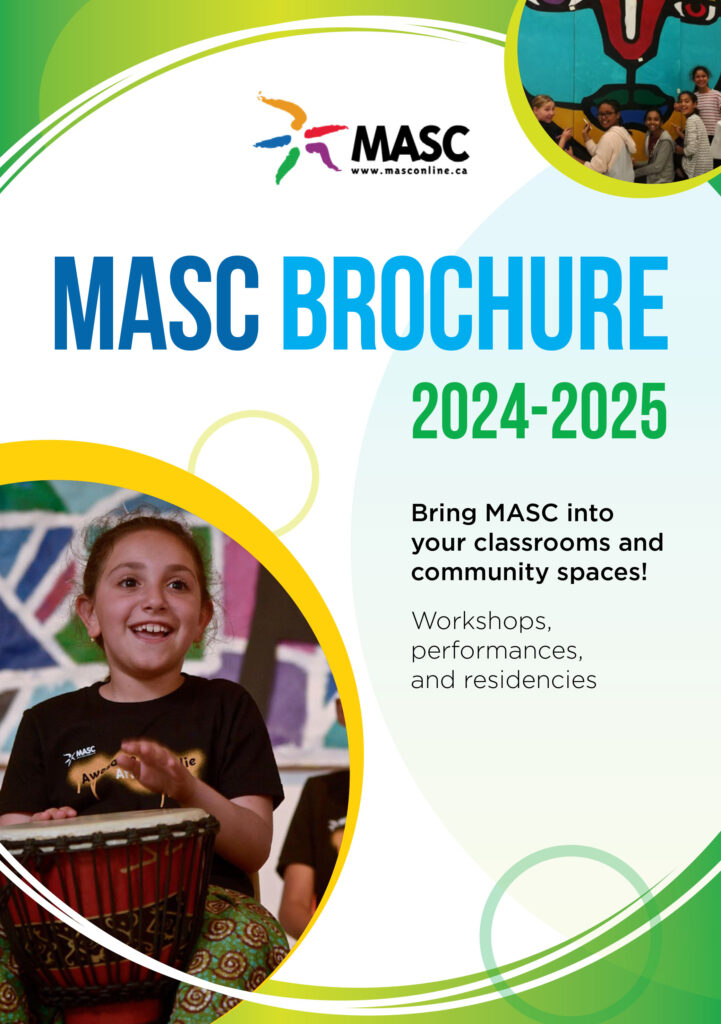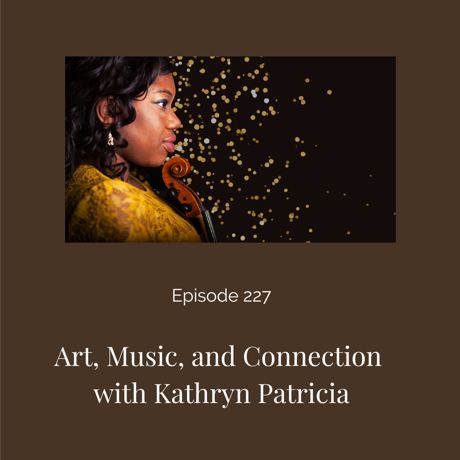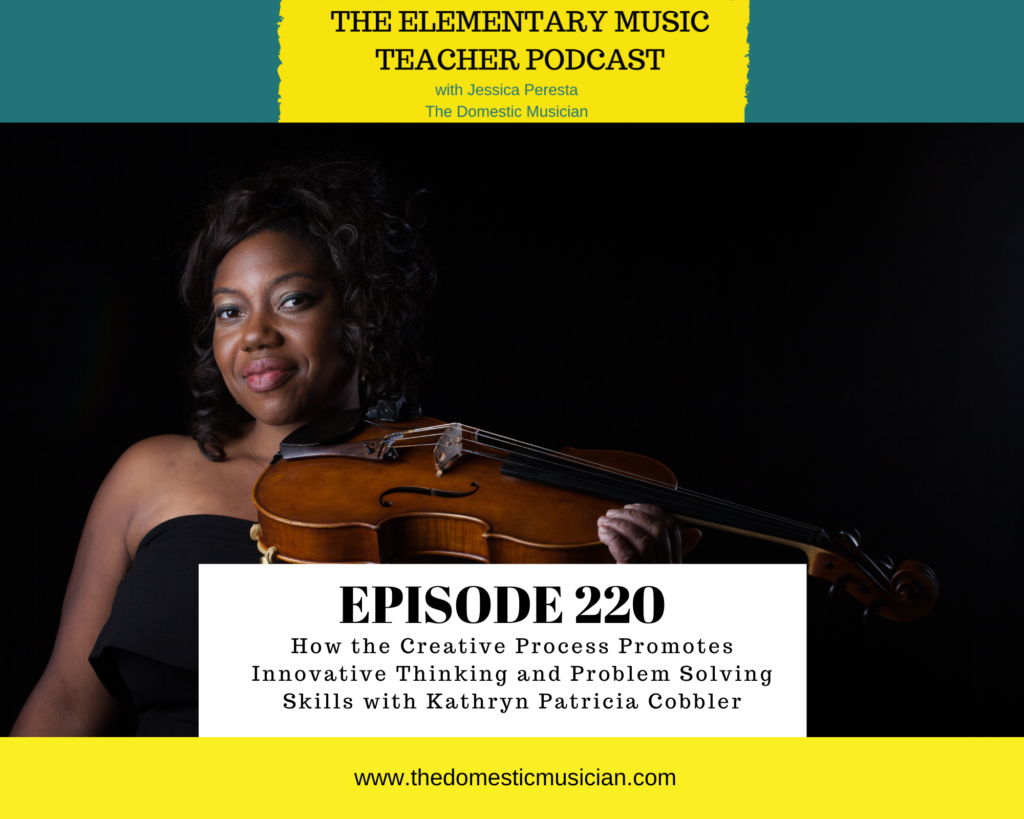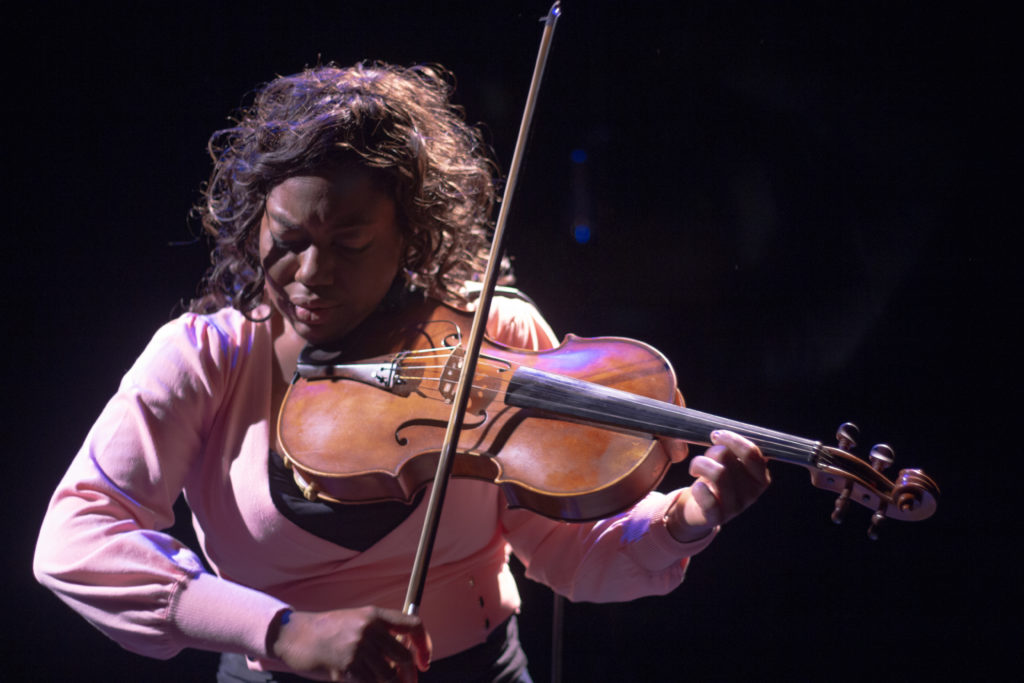October Newsletter 2024
Photo courtesy from Carré de la francophonie de Vanier | Artist featured: Julianne Lavertu
Breathe in, breathe out—September is behind us. The scent of autumn is beginning to fill the air, and MASC has a joyful October planned for you!
All you need to do is book an artist and let the magic unfold.
In this issue:
– What do you have planned for Halloween? MASC has a special activity for you!
– MASC family has undergone some changes.
– Do you need funding assistance to reserve a MASC artist? We’re here to help with multiple funding programs.
Together let’s bring the arts to your space!
Keep reading to learn more.
Unlock a World of Art and Culture: Explore MASC’s New Brochure!
News: JustJamaal ThePoet on Rogers Television
With only 3 days left until Awesome Arts en folie and one week left until MASC Young Authors & Illustrators Festival, MASC artist JustJamaal ThePoet – who hosts BOTH festivals – shares his love of poetry and community arts on Daytime Ottawa Rogers tv Ottawa, Cable 22 in this wonderful interview that includes a created-on-the-spot poem. Wow.
Interview with Roslyn Bern, President of Leacross Foundation
Leacross Foundation has been a long-time supporter of MASC, and most recently of the MASC Young Authors and Illustrators Festival. MASC Communications Director Jessica Ruano sat down with Roslyn Bern, President of Leacross Foundation, to find out what arts education means to her.
Leacross Foundation’s mission is to educate women and girls. What gendered barriers to education do you continue to observe today?
Women are 51% of the population and we’re still not in the upper echelons of making changes and decisions that affect society in general. I work with mainly women and girls in STEM fields, who have enlightened me that they have difficulty finding role models who have led the way. I’m fighting for those barriers to be broken down, one scholarship, one bursary, one experience, one internship at a time. We continue with these expectations by supporting organizations like MASC, an organization that shows the youth artistic role models, regardless of gender.
We want to level the playing field so that we can say to all children: you do not have to just be whatever we’ve told you to be in the past. But you need to have those role models.
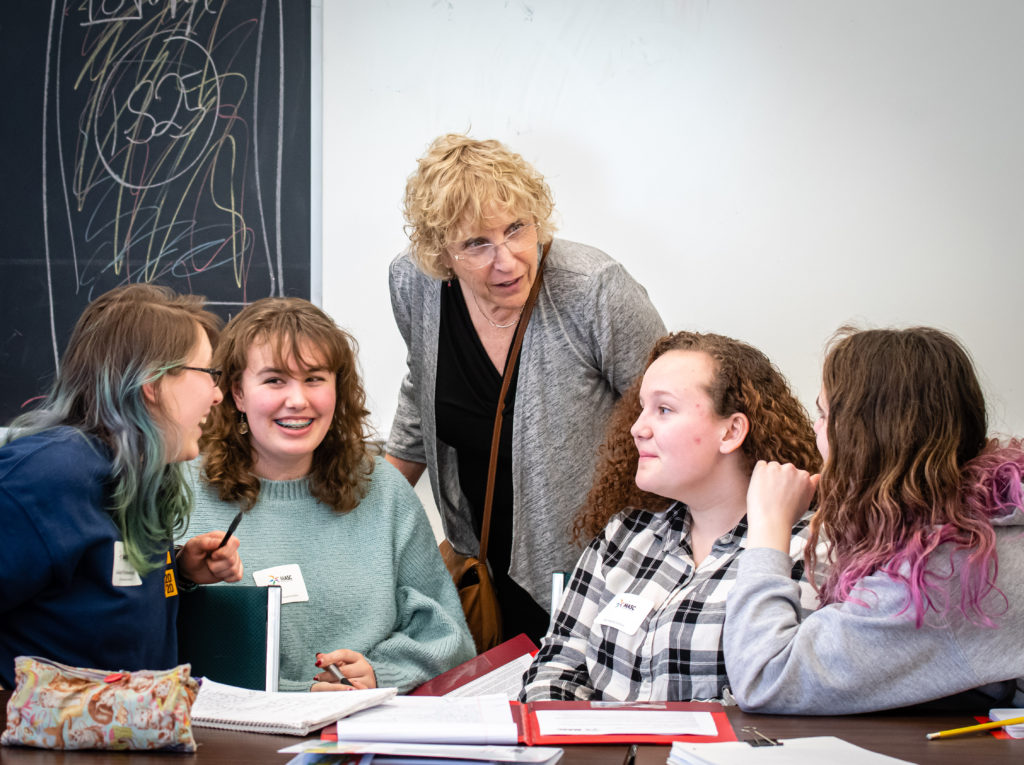
Your father started Leacross Foundation in 1993, and you took over in 2001. How has the foundation changed over the years, and in what ways has it stayed the same?
When I came into the family foundation, I realized, as a woman, I wanted to take it in a different direction. Philanthropy has changed: donors want to see impact of their donations. That is why I am so involved in the delivery of programs in not-for-profit organizations.
Since 2008 you have been a key funder of MASC at the organizational level. Why did you initially choose to support MASC?
MASC co-founders Jennifer Cayley and Jan Andrews approached me. I liked the idea of having equitable salaries for artists, and exposure of artistic role models to youth, regardless of location in the Greater Ottawa region.
And why do you believe so strongly in arts education?
Art reflects the society we’re in: the humanity, the brutality, the inequities, the kindness. Arts education allows for the development of young minds to express what might not be easily displayed with just words.
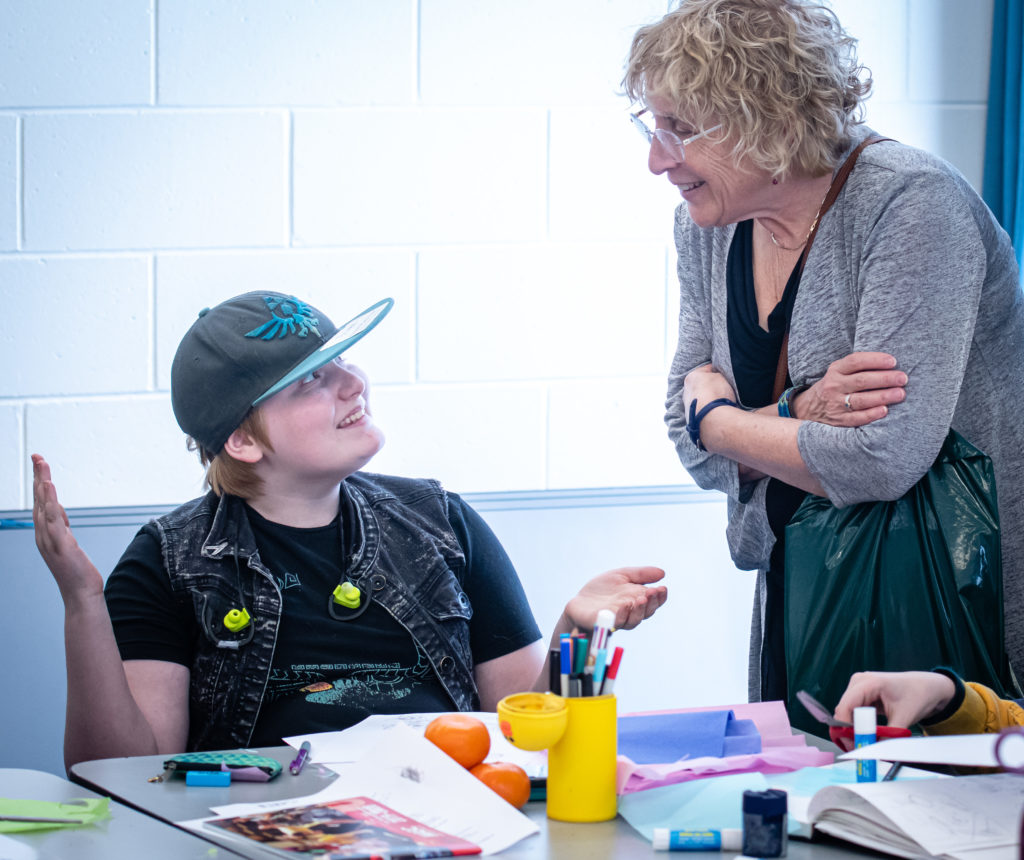
Leacross Foundation has supported the very popular MASC Young Authors and Illustrators Festival, as well as MASC’s Your Story Festival, where middle school and high school students participate in a day of workshops with professional authors and illustrators. What do you see as the value of these types of festivals?
I really do believe that talking to an authentic author or artist can give kids an experience they would not otherwise have. The youth are then energized and excited about sharing their ideas, knowing that an accomplished writer or illustrator is supporting them.
The value of festivals, after the past three years of lockdown, allows like-minded youth to convene and interact in ways that were not possible during the height of the pandemic. Secondly, the very act of using the body, for writing, for movement, for design, allows for the development of neuro pathways that are vital for the development of the child’s brain. The event at the museum allows for children to experiment, discuss, interact, and investigate.
What do you imagine for the future of MASC and arts education in general?
It is important for organizations like MASC to continue to allow for creativity in all forms, especially for young minds. With accomplished role models, children will create what has not been done before. That’s incredibly powerful.
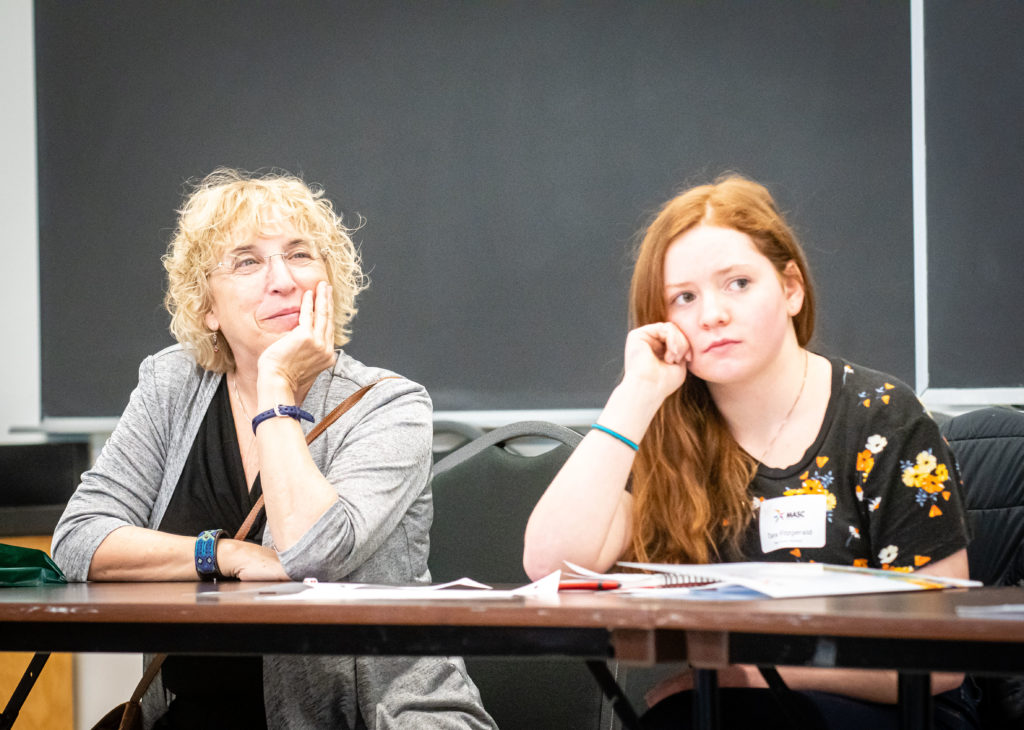
Making a song and dance about Awesome Arts en folie
Originally published in the Lowertown Echo
We’ve got plenty to sing and dance about this month, as MASC’s popular Awesome Arts en folie program returns to the Lowertown community. Last year the program celebrated 10 years of community-based arts programming for all ages, and brought together participants from the Lowertown and Sandy Hill neighbourhoods. This year MASC continues this collaboration between the two communities, which will culminate in a bilingual festival presentation featuring local residents and professional artists on Friday March 31st in the auditorium at Viscount Alexander Public School.
In preparation for the showcase, Lowertown youth who attend l’École élémentaire catholique Sainte-Anne are spending the next few weeks with Mr. Fresh from Bboyizm Dance Company learning a hip hop dance routine. Meanwhile, visual artists Claudia Salguero and Emily Rose Michaud are collaborating on an environmental mural with students at York Street Public School.
As part of the SHINE Youth Led Arts grant from Crime Prevention Ottawa in partnership with the Lowertown Community Resource Centre, a third group of youth are working with JustJamaal ThePoet and videographer Craig Conoley to create a music video for an original song they are writing together. Curious about what this video might look like? Check out MASC’s YouTube channel to see a dozens of amazing music videos and cinepoems we’ve created in years past.
MASC always puts on an amazing show, so come support your Lowertown neighbours as they take the stage next month! Book your free tickets for Festival Awesome Arts en folie at www.masconline.ca
MASC interview: Abel Maxwell
Article originally published on Apt613.ca
With his contagious enthusiasm, artist-educator Abel Maxwell captures the attention and interest of students with his passion for music and the arts, while also conveying humanitarian values based on self-esteem, trust, critical thinking, and respect for others. He studied at the Royal Conservatory of Toronto and the National Conservatory of Lyon (France). Maxwell has received numerous awards and honours including the UNESCO/International Humanitarian Fashion Week Community Achievement Award (2016), was nominated for Best Male Performer at Gala Trille Or (2015), and is the best-selling author of Transform Your Life, Business & Health.

Abel Maxwell leads a school workshop. Photo provided by MASC.
MASC: In your video interview with MASC, you said “we can learn to be better humans through art.” How have you seen this belief manifest in your life and work?
Abel Maxwell: I truly believe that art helps us develop essential soft skills and key aptitudes that are necessary for meaningful and positive human interactions in all kinds of life settings. I see this belief manifest itself every single day through my life and work, as art embodies thoughts, feelings, and emotions. Through art, it’s easier to convey messages of tolerance and collaborative efforts to foster a peaceful atmosphere among humans.
Your MASC workshops teach singing, vocal harmony, rhythm, and step-dancing. Aside from looking awesome onstage or on the dance floor, what skills do you think students take away from these workshops?
Through the lens of my experience, I have seen skills like increased coordination, improved memory, attention, concentration, socialization, and understanding through the activation of both hemispheres of the brain by maximizing learning. Moreover, students attending my workshops take away other skills like creativity, thinking on the spot, communication, and collaboration with others while improving their mood and reducing stress and depression.
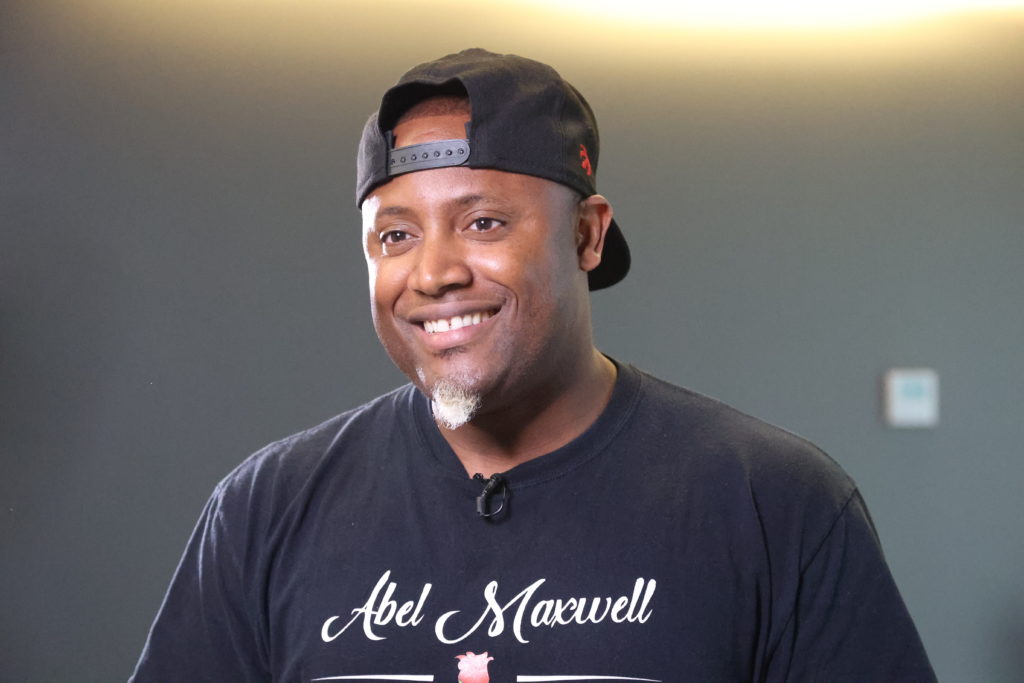
Abel Maxwell. Photo provided by MASC.
Black Legacy Month is just around the corner! What thoughts and feelings come up for you at this time of year? How do you choose to recognize this month?
Black Legacy Month is always an opportunity to acknowledge and celebrate great achievements of Black heroes in various domains, from science, astrophysics or medicine to history, law, music and sports. Since these heroes are not part of our school curriculums, it’s important to at least mention the names of people who have left an indelible mark on humanity. For instance, Martin Luther King Jr., Nelson Mandela, and Malcolm X have contributed a great deal to the fight against racism, violence, and oppression.
This year, I have chosen to recognize this month by releasing my fifth studio album, scheduled to drop on February 22 on all digital platforms. The release party will take place at the Université de l’Ontario français (l’UOF), with local media and people of influence as guests.
As a MASC artist, what do you gain through offering your workshops in schools and in the community?
It’s important to leave a legacy and to impact future generations with the knowledge that has been given to us. I hope to inspire youth with more creativity, flexibility and problem-solving skills through music and dance. Since youth are the future, it is necessary to create paths that can inspire them to make great choices for the sustainability of humanity.
MASC has been instrumental in building bridges between my art and schools. Many students have benefited from my workshops and have been encouraged to pursue greatness in whatever line of work they decide to dedicate themselves to in the future. And the connection extends beyond the classroom—some of the students continue to follow me on social media!
Why do you think it’s important for our local community to have access to professional artists?
I humbly believe that professional artists are a blueprint to creatively explore possibilities, including human values, in all walks of life. Having access to professional artists helps the local community to think critically, to be educated while being entertained, but mostly to be inspired to make a difference by fostering a passion for peace among humans, no matter their origins and beliefs. Professional artists help students to think outside the box or even better, to think without a box!

Abel Maxwell performs with students at École Samuel-Genest. Photo provided.
News: Music videos reflect Lowertown youth’s relationship to home
My family’s from Haiti, but I was born here / Because of Club 310 we have no fear / The Nights might be scary, but I’m safe in the light / And I’ve got my friends / Yeah, I’ve got my friends / We’ve got Lowertown
LT We’re the Next 2 B
Originally published in the Lowertown Echo on November 15, 2022
What does home mean to you? For the past ten years, MASC’s community program Awesome Arts en folie has felt at home in Lowertown, having hosted our eight-week residencies and festival event in partnership with the Lowertown Community Resource Centre. Through this program, our professional artists have had an opportunity to meet, collaborate and create with hundreds of Lowertown children, young people and seniors in all different art forms, and to explore what it means to belong to the Lowertown community.
Music videos have served as a powerful medium for expressing the complexities of Lowertown youth’s relationship to their neighbourhood. In collaboration with spoken word artist JustJamaal The Poet, the young people involved in the creation of these videos pen lyrics that address poverty, violence, discrimination, and isolation, while maintaining a sense of hopefulness and pride about their surroundings and their neighbours.
Videographers Craig Conoley and Randy Kelly capture the Lowertown geography from multiple angles, reflecting the perspectives of outside observers as well as the people living and working there. Locals will recognize the housing complexes, the schools, the parks, the community spaces, the street names and the businesses that make up this community.
Music videos The H.A.T.E. (Humble Ability To Empower) and SUPERGIRLS explore themes of empowerment through words and images; the former includes choreography from Bboyizm Dance Company performed by the youth, and the latter features stop-motion animation led by media artist Tina Le Moine.
Another of these videos, LT We’re the Next 2 B, has over 7000 views on MASC’s YouTube channel and was presented to a live audience at the 2016 Awesome Arts Festival. The video received a lot of meaningful feedback, including from a superintendent from one of the Lowertown apartment buildings:
According to the video description:
He said that he’d seen it all, the violence, the drugs, the cycle of poverty. But then he said that after seeing the video, the passion the youth put into the lyrics, and the love they had for their community, he said it made him resilient. He said that he wasn’t going to give up. And that he was going to go back and keep trying to make a change.
What does home mean to you? For this person, perhaps it means recognizing the reality of his surroundings–positive and negative and everything in between–and despite the challenges, choosing to stay. Perhaps it means to embrace his community as his home and do whatever he can to ensure that others feel at home there, too.
We at MASC are looking forward to returning to Lowertown in 2023 to celebrate our 11th year of Awesome Arts en folie in the community. Together we’ll create even more works of art that reflect ourselves and our community, in all its forms.
Interview: Luciano Porto shares Brazilian culture, dance, and music with young people
Originally published on Apt613.ca
Educator and performer Luciano Porto has been teaching music and movement to school children of all ages across Ontario for 18 years. As a member of MASC’s artist roster and the English Language Arts Network (ELAN), he has reached communities across Ontario and Quebec. Porto’s teaching style translates across cultural barriers and stimulates curiosity, creativity, focus and tolerance among the most diverse groups.
As an arts educator, you’ve dedicated yourself to sharing Brazilian culture, dance, and music with young people. What inspired this career path?
Because of chronic wrist problems from various physical labour jobs, I started looking for work that didn’t require heavy lifting or repetitive motion, and I ended up working at a daycare centre in Toronto. Working with school-aged children for several years required me to design creative art activities that could keep the attention of a rowdy group of kids. I used music, drumming, and Brazilian cultural art forms, as these were at the core of all my personal artistic endeavours at the time.
Brazilian drumming and dance are very powerful community bonds and traditionally involve all age groups from children to seniors. The drumming and dance groups I was involved with in Toronto at the time lacked this multi-generational element. Thus, I wanted to bring these experiences to children I worked with.
Soon, neighbouring daycare centres and schools caught on to what I had been doing and started requesting my workshops. This led to a natural evolution into a career that has become my primary focus!

You’ve recently appeared as a stilt walker at various events, including Taste of Wellington West and Ottawa Race Weekend. What can you tell us about the process of getting up on stilts?
Getting up on stilts takes an adventurous spirit first and foremost. Secondly, it takes being in great physical shape, as in having core strength. I have been blessed to have both of those qualities from a young age.
The process of tying one’s legs to long sticks should be guided, if possible. For that, I had a wonderful mentor in Toronto, Esra Houser, who trained with the infamous stilt dancers of Trinidad, where stilting traditions are very strong. Having masterful tricks taught to you directly really helps!
After several attempts, it becomes second nature. It’s like riding a bicycle! Kids that are really scared tend to take longer to balance on a bicycle, but if they persist, they inevitably learn and no longer fear falling off.
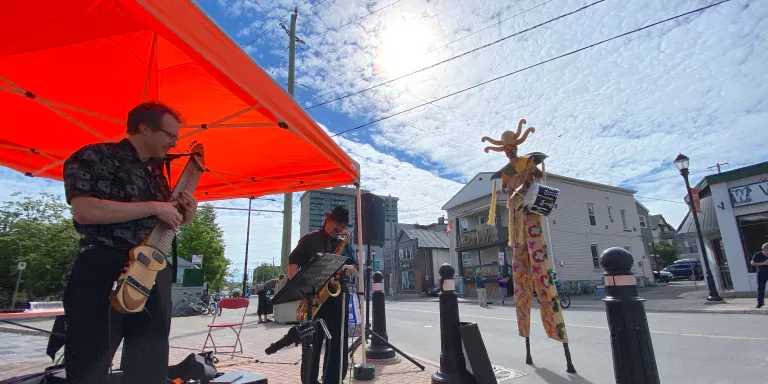
Luciano on stilts at Ottawa Race Weekend. Courtesy of Wellington West BIA.
In your MASC program Carnaval Arts, you create costumes, masks, and musical instruments with children of all ages, and guide them in presenting their very own carnival show. How do you bring the spirit of the Brazilian Carnaval into your workshops, while still encouraging the participants to make the performance their own?
It’s very hard to bring the true spirit of Brazilian Carnaval into a classroom setting. But I do try to connect with all the intensity of emotions I have felt both on the streets of Brazil as well as in Toronto during various parades when I performed in drumming and stilting ensembles. To create energy in the room, I’ll start playing a drum, singing, and dancing in front of the kids—sometimes in full costume. After getting the attention of the kids, everything seems to flow for me. My priority is getting the children to move, play, and experience something out of the ordinary. Most children don’t seem to have any trouble making the performance their own. Coordinating all the creative minds into doing something coherent and together is the main challenge.
I use the Brazilian drumming experience to give things some structure: simple traditional rhythms, songs, and steps that everyone can follow. After everyone learns to follow a basic rhythm and movement, it’s a matter of balance between giving the children some space to deviate and pulling them back into a collective harmony.
As a member of MASC, what do you gain through offering your workshops in schools and the community?
In our modern, affluent, and privileged society, there are still many barriers to accessing arts and culture for many communities. Though financial resources exist, they are not often directed toward the well-being of people, resulting in, among other things, art and culture funding cuts. I see that over and over again, from the classrooms to the streets where I have taken my art. Being able to expand my practice as an arts educator to reach as many children and adults as possible that can benefit from the experiences I facilitate is at the core of my drive.
That is where organizations like MASC can really support artists, like myself and the local communities they serve—creating bridges between artists and where they are needed. MASC also helps me focus on the delivery of my art programs by taking care of the admin part of contracts. I have always been an entrepreneur and have done everything from marketing to contract negotiations, grants, and logistics for all my music and education engagements, so I do fully appreciate what the staff of MASC does. It makes me feel more of an artist in the end!

Presenting a Brazilian Carnaval performance. Photo provided by MASC.
Why do you think it’s important for our local community to have access to professional artists?
The arts are what makes us truly human. It bonds people in expression of emotions and experiences. It brings communities together in gatherings and celebrations. It nurtures the depths of our desire to relate to one another.
Someone who has dedicated so many hours of their life to an art form becomes an incredible source of inspiration for everyone else interested in that form and medium. Artists act as magnets, catalysts of vibrant communities.
November Newsletter
November already? Time flies when you’re being creative! Read our hot-off-the-press newsletter for MASC updates and highlights, including Giving Tuesday, new MASC artists, Remembrance Day with Amanda West Lewis, podcasts from Kathryn Patricia, and Apt613 interviews with Craig Conoley, Axis Theatre, and Sultans of String.
What’s on your podcast list?
MASC artist Kathryn Patricia is an incredible advocate for arts and music education in schools. This fall, she has been a guest on a series of podcasts talking about her work in schools and communities. Click on the links below to enjoy some of her beautiful compositions in addition to insightful musings on the role of arts education.
The Elementary School Teacher Podcast with host Jessica Peresta.
How the creative process promotes innovative thinking and problem-solving skills.
Runtime: 25:02
Trending in Education with host Michael Palmer.
The Power of Music and the Arts in Education.
Runtime: 23:11
MASC Interview: Sultans of String celebrate and share music from around the world
This interview was originally published at Apt613.ca
Sultans of String are three-time JUNO nominees and SiriusXM winners. Thrilling their audiences with their genre-hopping passport of Celtic reels, flamenco, Django-jazz, Arabic, Cuban, and South Asian rhythms, Sultans of String celebrate musical fusion and human creativity with warmth and virtuosity. They recently won Best Musical Film at the Cannes World Film Festival for The Refuge Project—Visual Album. Bandleader Chris McKhool talks about upcoming projects and the magic of being a MASC artist.
Sultans of String always seem to have so much going on! First things first, tell us what’s happening with this Sanctuary (The Refuge Project) virtual concert on Friday, November 4, at 7:30pm.
Chris McKhool: We are so excited about this show! The Sanctuary/Refuge project was designed to highlight the incredible contributions of new immigrants and refugees to Canada. As a world music band, we get so much joy from working with artists from around the world and global talents who are also ambassadors for peace. We love to celebrate the successes of those who make the journey here and bring their extraordinary talents with them, and we hope the conversations we have as musicians will provide a model for peace that will inspire our politicians and citizens.
Our November 4 concert has an incredible lineup: singer Leen Hamo and clarinet player Majd Sekkar, both exceptional musicians and refugees from Syria; Persian percussionist Naghmeh Farahmand and tar player Padideh Ahrarnejad; Donné Roberts from Madagascar; a scarf dance by Tamar Ilana; and Saskia Tomkins on nyckelharpa. We will broadcast live from the Zoom Room we developed during the pandemic with a six-camera shoot from our digital soundstage, the same one we use for our MASC livestreams. It’s going to be a party!

Sultans of String. Photo: Jake Jacobsen.
Rumour has it you’re raising funds to support upcoming collaborations with an impressive list of Indigenous artists (including Crystal Shawanda, Don Ross, and Dr. Duke Redbird) from across Turtle Island. What inspired this project, and what do you hope will come of it?
Yes, we are currently recording our ninth album, a beautiful collection of collaborations with First Nations, Métis, and Inuit artists across Turtle Island/Canada. We want to make a difference in the world with the music we play, so we’re making this album in the spirit of the Truth and Reconciliation Commission’s 94 Calls to Action and Final Report that asks for Indigenous and non-Indigenous people to work together as an opportunity to show a path forward.
We know that, as a society, we can’t move ahead without acknowledging and reflecting on the past. Before reconciliation can occur, the full truth of the Indigenous experience in this country needs to be told, so we’ve been inviting Indigenous artists to share their stories, their experiences, and their lives, so we settler Canadians can continue our learning about the history of residential schools, cultural genocide, and intergenerational impacts of colonization.

Sultans of String. Photo: David McDonald.
Sultans of String has been around since 2007, and you’ve worked with so many other artists. Over the past 15 years, what have you learned about what makes a good collaboration?
For us, it starts with an idea, something that we feel is important and needs to be said, and then reaching out to people we want to share voices and opinions with. We need a space and platform where everyone can be heard equally and contribute to the song. Also, we need to be open to new ideas and work together to come up with a statement or piece of art that captures elements of all the ideas that people are contributing.
In our current project, we are collaborating with the group Northern Cree, who create Pow Wow music that is outside of our typical song form. This requires a deep dive to figure out how to bridge our two musical worlds without interfering with or changing the core of what Northern Cree does. The pieces finally fell into place, and we unlocked the way for the musical worlds to connect in a respectful way. It has grown from there, and now the piece keeps morphing and changing. It is like watching a tree grow from seed right in front of our eyes.

Northern Cree and Chris McKhool. Photo: Chris McKhool.
As a member of MASC, what do you gain through offering your workshops in schools and the community?
I really love sharing music and stories through the arts with audiences of all ages. It is a great way to connect with others and share thoughts and ideas that are important to me, as there is an element of community-building in the presentations we develop. Of course, it is only a concert if there is an audience, and as artists, we receive a lot of energy from presenting our work—especially when working in schools! It is a true joy to feel the energy of the students, to see the musical spark in them as they ask questions, and to imagine the amazing music and art they are going to create as they get older.
Why do you think it’s important for our local community to have access to professional artists?
For some, school is the only place where they may have exposure to the arts, so it is super important that we provide artistic works at a high level for students. Young people, just like adults, use the arts to make sense of the world around them and the complex feelings they experience.
I was personally very inspired as a young musician by seeing performances throughout my elementary and secondary years, and that was a very important part of my development in becoming an artist myself. I was exposed to concerts at my school, performances out in the community, and even seeing the National Arts Centre Orchestra. These experiences were all part of the big picture I formed of the depth and breadth of what was musically possible.
MASC Interview: Axis Theatre shares Indigenous stories with young audiences
Originally published at Apt613.ca
Axis Theatre focuses on engaging young and young-at-heart audiences. The company’s members live, work, and play on the unceded and traditional territories of the Coast Salish peoples–sḵwx̱wú7mesh (Squamish), sel̓íl̓witulh (Tsleil-Waututh), and xʷməθkʷəy̓əm (Musqueam) nations. In this interview, Artistic Director Chris McGregor talks about reaching new audiences during the pandemic and beyond.
Axis Theatre’s productions of Th’owxiya: The Hungry Feast Dish and Kwi’ah: The Girl Who Heals are inspired by Kwantlen First Nation tales. What inspired this working relationship with Joseph A. Dandurand (Kwantlen First Nation), and how has this collaboration influenced the focus of your company?
In 2015, Joseph contacted me through email and sent me one of his scripts, Don’t Touch the Indians. I really liked his writing style; however, the play was for an adult audience, so I asked if he had any scripts for young people, specifically elementary school ages. He said that he did, but it was on a floppy disk—you know, what we used in the olden days—something he wrote 25 years ago while he was an intern at the Canadian Museum of History.
A few days later, he sent me Th’owxiya: The Hungry Feast Dish, a script that combined three Kwantlen First Nations tales. Axis Theatre workshopped the script a few times, reduced the number of characters, and then mounted a full production with six performers.
Our relationship with Joseph has blossomed over the several years of collaboration. Axis Theatre has been introduced to so many talented Indigenous performers, visual artists, designers, builders and musicians—cultural practitioners from all walks of life. These relationships have enriched Axis Theatre’s work, and many of these contacts have worked on other projects with us. Most importantly, we are employing these artists and giving them the stage and a voice to tell Indigenous stories to young people. It is a beautiful relationship and one that we continue with new playwrights and emerging artists.

Joseph A. Dandurand. Photo provided by Axis Theatre.
During the pandemic, many artists shifted to an online medium to continue connecting with their audiences. The “liveness” of theatre is often challenging to capture on film, but your company has managed it beautifully. What were some of the challenges and opportunities in sharing this theatrical production via film?
We were met with several challenges moving from a live medium into a digital format. I would say that the biggest challenge was the actual filming during the height of the pandemic. We followed very strict health protocols to ensure the safety of the cast and the crew—our staff took on new, sometimes unfamiliar roles to support the filming process. Coordinating the filming involved the schedules of more than twice as many people as we normally work with on live production, and it is very expensive. However, we overcame those hurdles and delivered a film that we are very proud of.
There was a larger demand for the film than we anticipated, which was thrilling and brought in our only income during the pandemic, with live touring at a complete standstill. Our work was introduced to communities across Canada, to new contacts and familiar ones, an audience we would have lost contact with if we hadn’t taken the risk of adjusting how we share our plays. Even more than with our live productions, we heard from young people who shared how much they enjoyed the film and what specifically spoke to them through letters and drawings. This feedback overshadowed any challenges, and we are so thankful to be able to give people access to Indigenous stories that interest and educate them.

Kwi’ah: The Girl Who Heals. Photo provided by Axis Theatre.
Your productions often incorporate red-nose clown, mime, movement, mask work, and puppetry. What about these tools and practices do you find especially useful in sharing First Nations’ stories?
These theatrical practices help engage our audiences and happen to be the areas of theatre I, as artistic director, have studied and taught. Th’owxiya uses direct address to the audience: sometimes there are questions the characters ask of the audience, and sometimes the answers are a surprise! This style is very indicative of Indigenous storytelling and incorporates clown and improvisation aspects, too. When the performers practice clowning and improvisation in rehearsal, they learn the skills that help create a dialogue with the audience and the tools to maintain the story without going off track. This way, the audience feels they are a part of the journey rather than just spectators. This interaction makes it fun for the performers as well, keeping it fresh and alive—who knows what each audience may bring! Every performance is a story just for that audience, a performance just for them.
As a member of MASC, what do you gain through offering your performances in schools and the community?
Through MASC, we’ve had the opportunity to offer virtual talkbacks with Joseph following the performances. Students usually have many questions about the history behind the script and characters: Are the spirits real? Where do the stories come from? Joseph has a wry sense of humour and an abundance of knowledge, so he truly enjoys sharing his history, culture and art with young people across Canada.

Th’owxiya: The Hungry Feast Dish. Photo provided by Axis Theatre.
Why do you think it’s important for our local community to have access to professional artists?
I think it is important to experience the talents of those who dedicate themselves to their art and know that it is a real profession, not just something that will make you famous or earn someone a lot of money. For Axis Theatre, having professional artists involved is essential to the success and integrity of our productions. They have been well-trained in their craft; they do lots of research about the stories, people, customs and traditions that make up our Indigenous plays and our other work. The many artists involved, from designers to painters, carvers, weavers, and performers, in the making of this production, take their craft very seriously and know how to engage young audiences. There is a passion and dedication that professional artists share that can inspire young people to find their own passion and follow their dreams, regardless of the obstacles.

